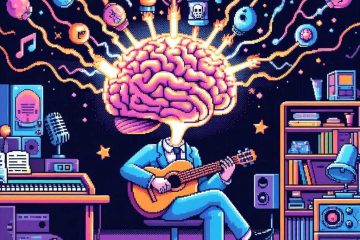Better Craftspeople
Living on a 22-acre farm in the foothills of the Sunshine Coast, I’m constantly reminded of how fortunate I am. Spending inordinate amounts of time in front of a screen, I am purposeful about taking an evening walk with my dog Reggie.
The other evening I was pondering music making and film making on an evening walk. The average person has access to some amazing equipment to be creative with. It’s actually quite profound how professional and powerful these affordable pieces of equipment have become.
That got me thinking about what is the differentiator as we move forward in a world of AI as well as affordable, powerful and professional sounding gear?
The answer is simple, we need to become better craftspeople with these powerful tools we have access to.
Addiction & Songwriting
I’ve been re-reading James Clear’s infamous “Atomic Habits” again. In a very meta way, I’m reading it because I’m developing a habit to read more physical books.
A few days before I was musing on the hill, I’d been reading about “The Dopamine-Driven Feedback Loop”. This got me thinking about what makes a song resonate with the listener and how it could relate to this feedback loop.
Dopamine & Habit Forming
When it comes to habit forming, when you first complete an action you get a dopamine spike because of reward that comes from the action. This leads you to want to experience the reward again, and again, and again until a habit is formed.

There is a bit more too it all but here’s the interesting bit:
- The first time you experience a reward you get the spike with the reward.
- The second time there is a cue, which leads to a craving which causes a dopamine spike before the reward.
- Once a habit is learned, even after you respond to the craving the dopamine spike won’t occur when you get the reward. You’ll get the spike when you crave the reward.
- If the reward doesn’t occur your dopamine dips in disappointment
- If the reward is delayed you’ll get a dip in dopamine and then you get another spike when the reward comes.
Tension & Release
When I got the premise of this dopamine behaviour I started to apply this to music. The idea of tension and release in music is just one concept that applies to this anticipation and reward cycle.
From reading Friedemann Findeisen “The Addiction Formula” (ironically) I consider my music production and mixing activities as “managing the energy” of a song. This means getting each section to lead to the next with the appropriate amount of energy (tension and release) so nothing “falls flat” as you move between sections of the song.
This is a macro level view and this is how people generally listen to music (if they’re not a music nerd). It’s important for your songs to work on this level but how you achieve this is your job as a songwriter/producer.
This can be broken up into micro elements too such as instruments being introduced, high-hat patterns and intentional dissonance to create tension and release. This definitely deserves it’s own blog.
Survey Says “Yes, Music & Dopamine Intrinsically Linked”
It turns out my hunch was right. Recent studies back up the idea that music has a powerful effect on our brains, specifically through the release of dopamine. Researchers have discovered that:
“People not only release dopamine at the peak pleasure moments in music, but also in anticipation of these moments.”
This anticipation and reward cycle mirrors the dopamine-driven feedback loop involved in habit formation. Music creators can harness this knowledge to craft songs that keep listeners hooked.
“The temporal unfolding of sounds leads to the creation of expectancies, and their violation, confirmation, or delay of resolution can lead to emotional arousal.”
In other words, the way music unfolds over time creates expectations in our brains. When these expectations are met, violated, or delayed, it triggers emotional responses. Skilled songwriters and producers can use this to their advantage, crafting music that keeps listeners on the edge of their seats.
“Liking new music activates the parts of the brain involved in forming expectations and coding their accuracy… This helps explain why different people have different tastes in music.”
This research highlights the role of individual preferences in music enjoyment. Our unique brain patterns and past musical experiences shape our musical tastes. By understanding these diverse preferences, music creators can tailor their work to resonate with specific audiences.
The Takeaway
To go back to my original musing, we have access to tools which level the playing field from a quality standpoint so all that is left is our own craftsmanship. By understanding the science behind dopamine and music, it gives us another perspective to think about how to make our music more impactful and sticky to our listener.
This is genre agnostic too, the principles of tension and release work in all genres. BUT understanding that those ideas are found in unique ways in different genres as well as pushing the boundaries of those norms can help us write more appropriately for genres.
I definitely think there will be a follow up post or two about this interesting link brain chemistry and writing great songs. Here’s to making rewarding music.



0 Comments